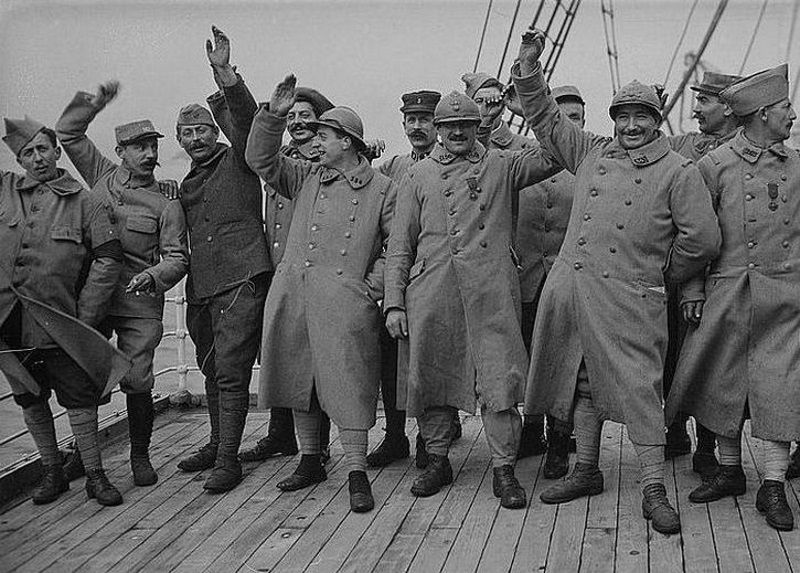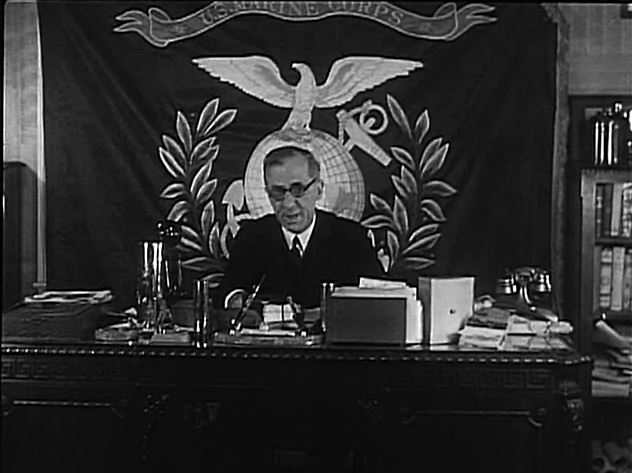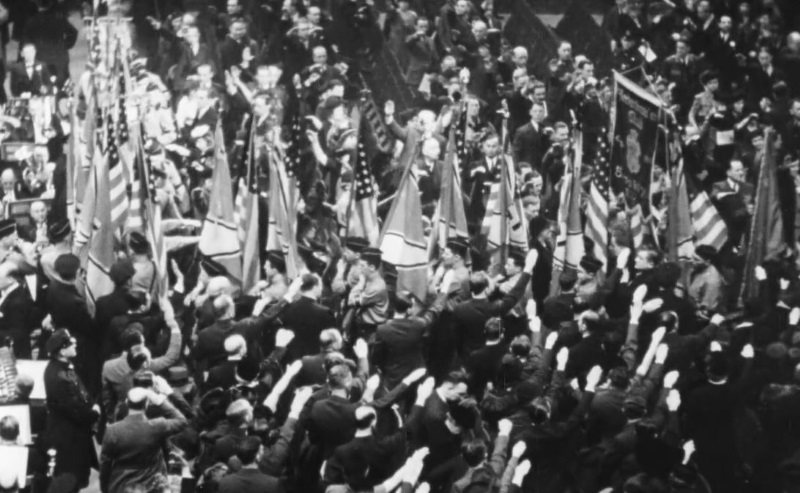
In 1917-19, as the First World War was coming to a close and afterwards, the French and British Armies were reeling as thousands of soldiers mutinied. As a result, through the remainder of the war, the French Army virtually stopped being effective as an offensive fighting force, and the British Army agreed to big improvements in the conditions of the soldiers while speeding up demobilization.
In April 1917, French General Robert Nivelle proposed a joint French-British offensive against the German lines that promised rapid victory in two days. After hard fighting, the offensive captured a few of its objectives but failed to achieve the promised victory. As a result, morale in the French Army, which had suffered losses of more than a million men since the start of the war, collapsed. Divisions refused to follow orders, a mutiny that spread to eventually involve nearly half the entire French Army.
The offensive was called off as the French High Command moved swiftly to suppress the mutiny using loyal troops, resulting in numerous courts martial and convictions, though most of the sentences were reprieved. As a result of the mutinies, French commanders became reluctant to launch another big offensive, and decided to wait for the Americans, who had decided to enter the war. The French Army didn’t recover until early 1918, when the revived army, fighting alongside the British and Americans, defeated the last great German offensives in March and April.
As the war came to a close, the UK faced its own mutinies. The British ranker suffered significant abuse by the officer class along with poor conditions and severe discipline, which led to numerous mutinies in the last months of the war and into 1919. Between September and December 1917, troops demonstrated and staged strikes to protest their treatment. Scores of Chinese and Egyptian soldiers were shot when they tried to break out of camp. In 1918, Royal Artillery units rioted and burned army depots, troops in Shoreham marched out of camp to protest brutal treatment by their officers. Unrest spread in Calais until 20,000 troops joined a mutiny that seized control of the Army headquarters there. The soldiers formed a Calais Soldiers and Sailors Association, issuing orders to units based on a delegate system. Local French rail workers supported the strike, refusing to move British military supplies.
General Byng arrived to put down the mutiny, but many of his soldiers defected to the mutineers. As a result, the Army chiefs were forced to give in to the soldiers’ demands for better food, new barracks, and more. The success of the mutiny rippled across the British Army, with a wave of mutinies across the Army in January 1919. Fearing the rebellion could turn into revolution, the chiefs quickly improved conditions and accelerated the demobilization of the Army.

 The protesters fled the first camp across the Anacostia River to their largest camp, at which point President Hoover ordered a halt to the attack. MacArthur ignored the order. Stating the Bonus Army wanted to overthrow the government, he ordered a fresh assault, resulting in 55 veterans being injured and another 135 arrested. The camps and all the veterans’ belongings were burned.
The protesters fled the first camp across the Anacostia River to their largest camp, at which point President Hoover ordered a halt to the attack. MacArthur ignored the order. Stating the Bonus Army wanted to overthrow the government, he ordered a fresh assault, resulting in 55 veterans being injured and another 135 arrested. The camps and all the veterans’ belongings were burned.

 I was happy to get an advance copy of Tyrell Johnson’s THE WOLVES OF WINTER (Scribner, January 2018) through NetGalley. It’s part apocalyptic tale, part coming of age story, and I really enjoyed it. Apocalyptic fiction has taken on a bit more of a literary bent lately as both a natural part of its evolution and to give it more mass appeal, and Johnson’s novel is one of the good ones.
I was happy to get an advance copy of Tyrell Johnson’s THE WOLVES OF WINTER (Scribner, January 2018) through NetGalley. It’s part apocalyptic tale, part coming of age story, and I really enjoyed it. Apocalyptic fiction has taken on a bit more of a literary bent lately as both a natural part of its evolution and to give it more mass appeal, and Johnson’s novel is one of the good ones.